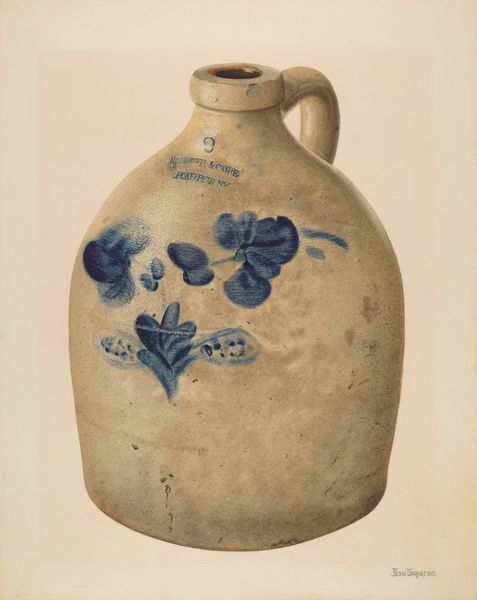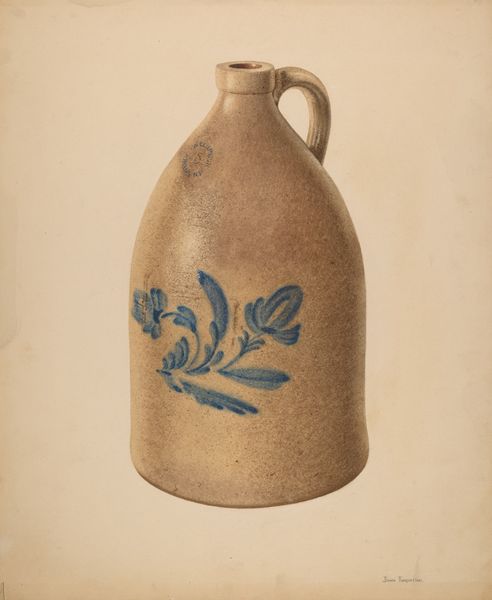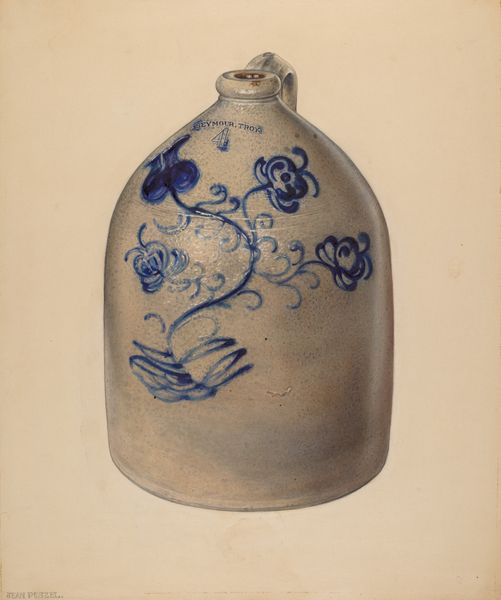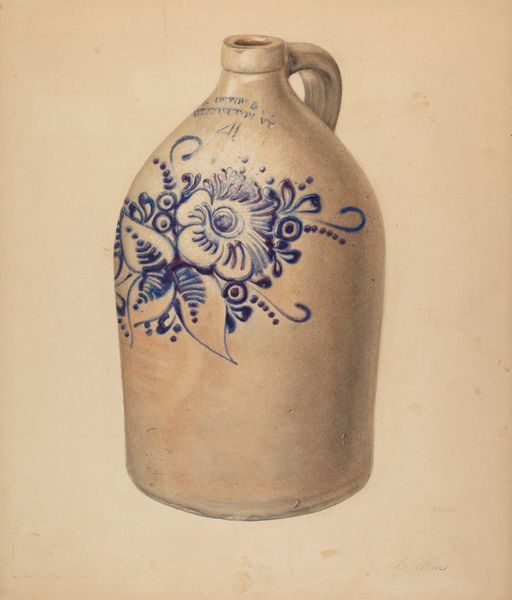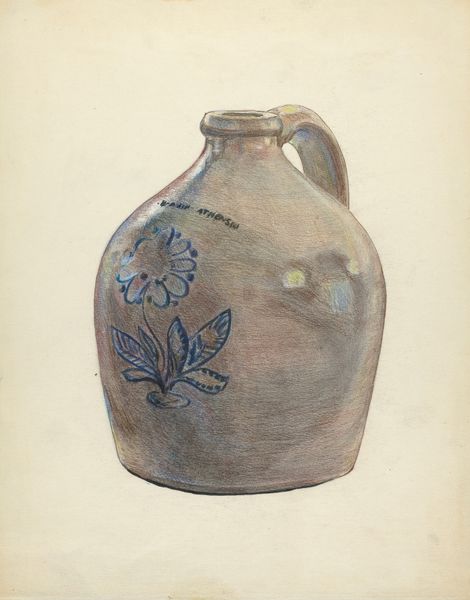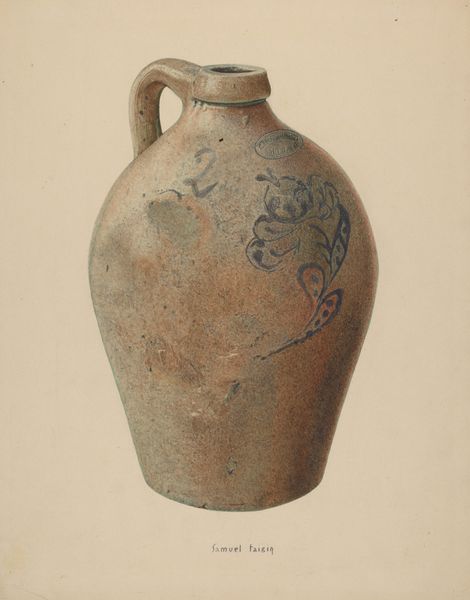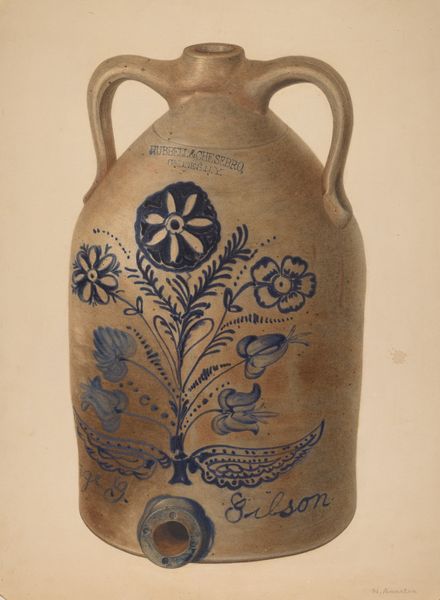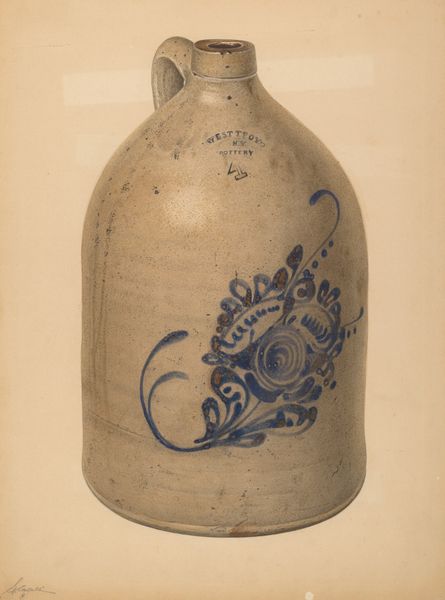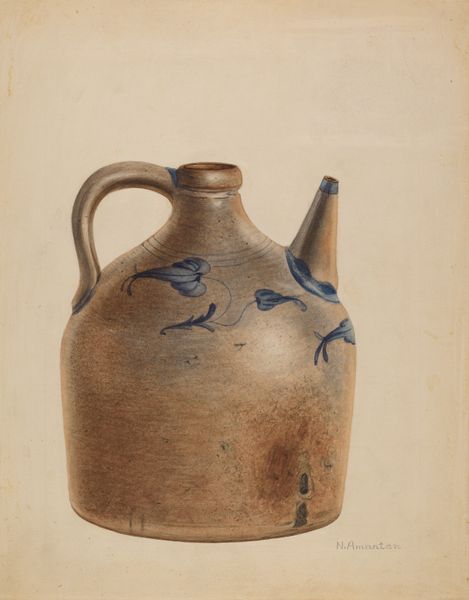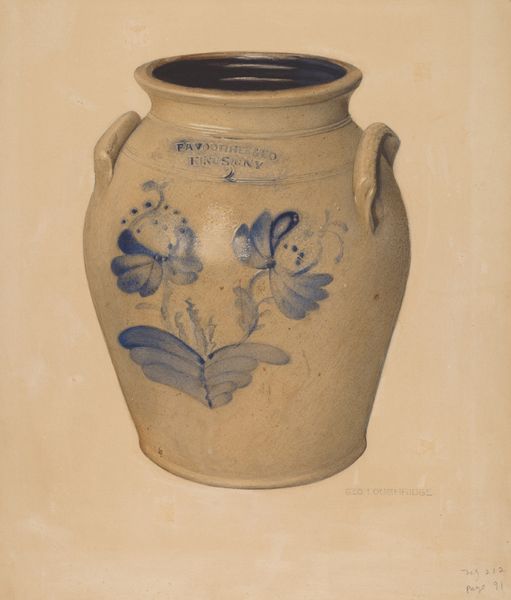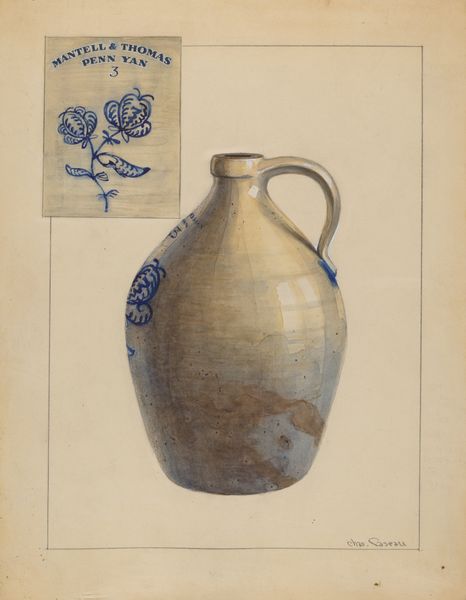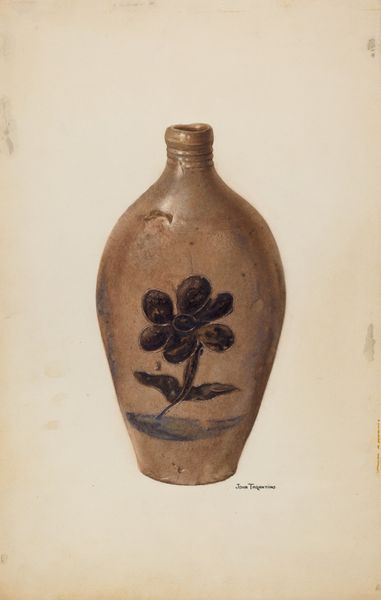
drawing, ceramic, watercolor, earthenware
#
drawing
#
water colours
#
ceramic
#
watercolor
#
earthenware
#
ceramic
#
earthenware
#
watercolor
Dimensions: overall: 46 x 38.1 cm (18 1/8 x 15 in.) Original IAD Object: 11 1/2" High 9 1/2" Dia(base) 2 1/2" Dia(neck)
Copyright: National Gallery of Art: CC0 1.0
Curator: Welcome. We’re looking at Giacinto Capelli’s "Jug," created around 1941. It's rendered in watercolor on what appears to be drawing on ceramic. What jumps out at you, Editor? Editor: Well, first off, it's undeniably quaint! Almost aggressively so. It feels like stepping back into a simpler time... the kind where lemonade was always freshly squeezed, and porch swings creaked just so. I suppose this work evokes this sense of a past life. Curator: That aligns with what I see. The jug, so simply shaped, speaks of functionality but the stylized flower is key here. The blue rendering in watercolor evokes tradition. Ceramic earthenware jugs throughout the early 20th century symbolize American domestic life, especially in rural communities. The added design connects to personal and local stories, linking function with art, craft, memory. Editor: Right. And it's not just *any* flower, is it? It’s a homespun, folksy blossom, rendered with a certain endearing clumsiness. Like something a child might paint, a symbol of innocent rural past, before mass production took over! It’s deliberately imperfect. This makes this flower blossom into more of a memory: nostalgia, sentimentality and cultural continuity. Curator: Exactly! This “imperfection” strengthens its message. The Clarkie Atbony imprint only supports my claim: the object might refer to one local jug maker and workshop of this past. By the way, I must point out the contrast with some elements: that slightly crude yet sincere design contrasts with its historical role of container. Capelli reminds us of what we were, in regard to what we have now. Editor: So, not just a pretty picture, but a symbol of cultural memory! It all adds layers. Like sediment forming on the riverbeds of time. It speaks volumes even in its modesty. It invites us to slow down, remember and even smile at its gentle imperfection. Curator: Yes, beautifully said. In such a little art piece so much human and cultural load, I see reflected the story of past objects as mirror of a community. Thank you for your time. Editor: The pleasure was all mine! It's always fun to peel back the layers of history… one watercolour at a time!
Comments
No comments
Be the first to comment and join the conversation on the ultimate creative platform.
